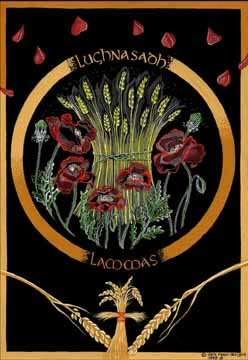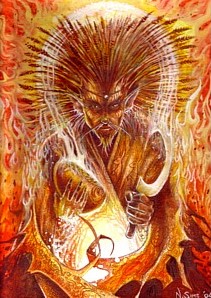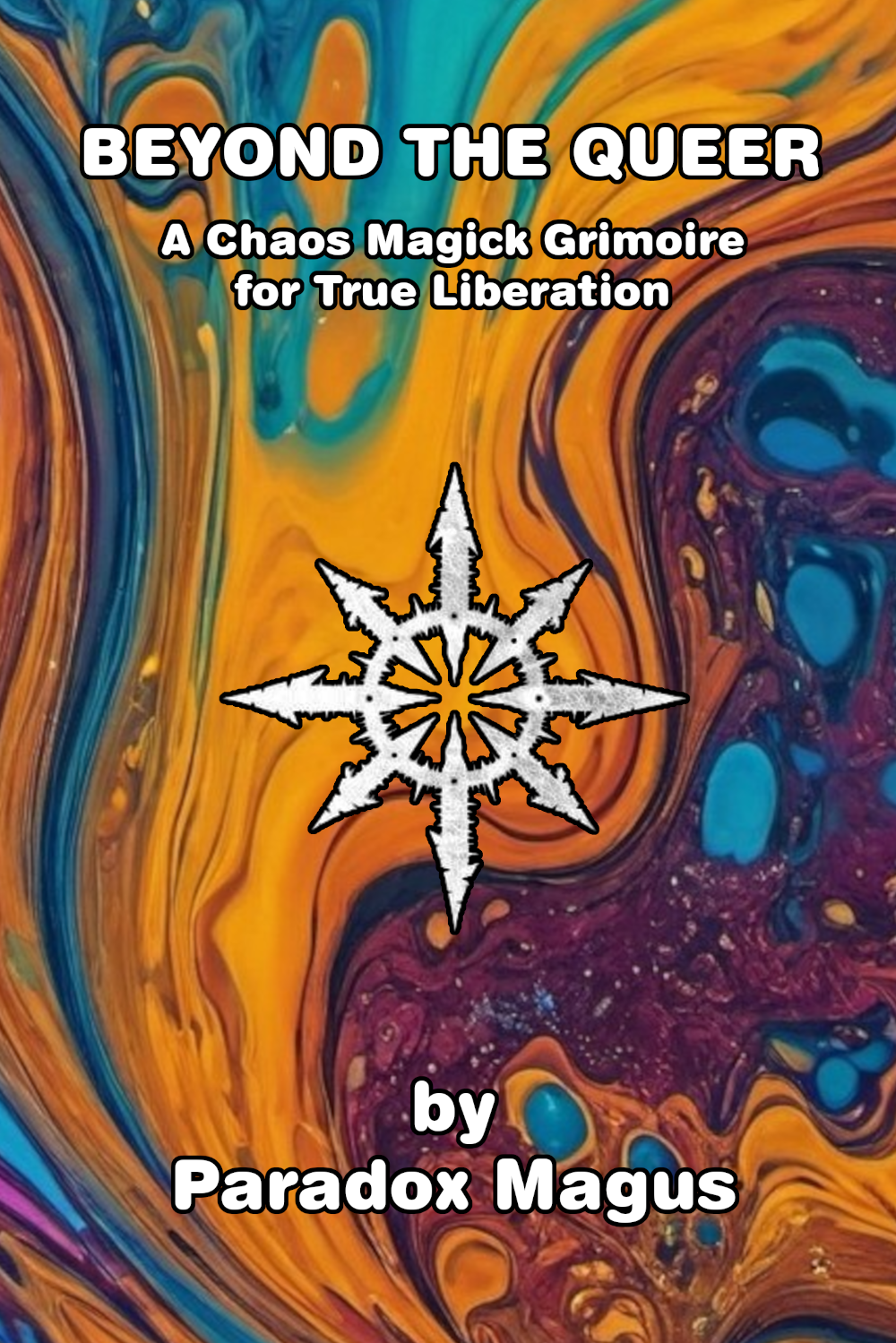
Lammas is one of the major Sabbats that have been preserved thanks to medieval magicians. The day falls at 15 degrees in Leo, halfway between the Summer Solstice and the Autumnal Equinox. Nowadays it is usually celebrated on the night of the 31st of July to the 1st of August, the month of the manifestation of the fullness and abundance of the first harvest. It is the Sabbath that acts as a counterpoint to Imbolc in the wheel of the year.
This date signals the beginning of the harvest season. It is a feast of regeneration in which the first harvested fruits are offered to the gods. It is a day of power and wisdom that benefits any intellectual activity and enhances protection rituals.
The name Lammas comes from the Old English Loaf Mass or Hlaf-mas, which means Bread Mass. It was a tradition to bake bread with the first grain of the harvest. In every region the first grain was celebrated. In England it was wheat, in Scotland and Ireland it was oats, in America and Australia it was corn, in the East it was rice...
Bread and yeast represent the mystery of transformation, the change of matter through fire. This in turn represents civilisation, which arose thanks to agriculture. The oven became a sacred object that allowed the transformation of life. It is thus related to the feminine mysteries. The mystical aspect of the grain is reflected in the psychoactive role of ergot used in the rites of Eleusis.
The Celts dedicated the festivities to the god Lug, who was the wisest and most powerful of the Celtic gods. In some versions of the myth, Lugh was sacrificed at this time, so the celebration acquired a certain funerary character.
The festival extended between 15 days before and 15 days after Lughnasadh, the day which represented the main apex. Some argue that the feast of the Virgin of August is linked to the end of the Lugh rites.
In ancient times, grain was seen as one of the manifestations of divine power. This was personified in the figure of the "green man". The Oak King grew and strengthened in spring and summer only to fall at harvest and sleep in winter inside Mother Earth, coming back to life later in the form of a child. Mother Earth had various names in Celtic myths. The ancient Irish knew her as Tailtu or Tailte, stepmother of the god Lugh. The Goddess, once she has borne her fruit on Lammas will transform into the Elder or Cailleach, a personification that will emerge on Samhain.
The cycle of birth, growth, consummation, sacrifice, death and rebirth was celebrated through rituals, processions, dances, games and feasts.

Symbols: the square labyrinth for protection and the triangular labyrinth for overcoming difficulties.
Amulet: the doll made from corncob leaves which is usually worn all day and then burnt at midnight.
Colors: orange and green.
Gems: amber, emerald, jade, onyx.
Food: homemade and artisan seed breads, nuts, rice, strawberries, lamb, red wine, beer, petal tea.
Herbs: acacia, cyclamen, oak leaves.
Activities: plaiting ears of corn, making corn dolls, preparing banquets, making personal sacrifices, preparing for the second harvest...
Astrological sign: Leo

